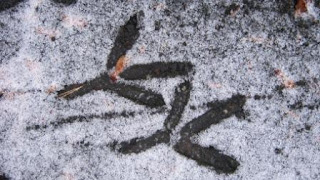After a cold and snowy day at the Hatchery, the crew arrived the next morning to find evidence of an overnight visitor. The oversized tracks were nearly as long as a human foot and eerily resembled what a Tyrannosaurus Rex might have looked like. Fortunately, this was not a T-rex, but rather a relatively common Great Blue Heron, Ardea Herodias. One could imagine this tall bird walking along the perimeter of the Hatchery peering into what must be a heron Shangri-La; 2.1 million budding steelhead smolts at just the perfect snacking size. Unfortunately, for the Hatchery’s guest, the bird netting was an effective deterrent and the tracks never re-appeared within the confines of the fish production area.
The tracks were a reminder to the constant vigilance the Hatchery crew maintains to repair netting and keep the area predator free. A Great Blue Heron does not eat that many fish as compared to the millions of smolts supported at the Hatchery. However, a larger problem occurs by the transfer of smolts and water across rearing containers. The transfer issue can cause disease contamination. In the Hatchery setting, disease prevention is the best cure. One transfer of a virulent disease can cause substantial fish losses. In the past, the Hatchery has encountered infections of Infectious Hematopoietic Necrosis (IHN) that has caused mortality rates of over 50%! So despite, the Great Blue Heron’s regal stature and fit into the natural ecosystem, he is an unwelcome guest here at the Hatchery. We wish him luck on his hunting adventures as long as they aren’t here!
The following photos are from the William L. Finley National Wildlife Refuge in Benton, OR.
 |
| Photo credit: George Gentry/USFWS |
 |
| Photo credit: George Gentry/USFWS |




No comments:
Post a Comment